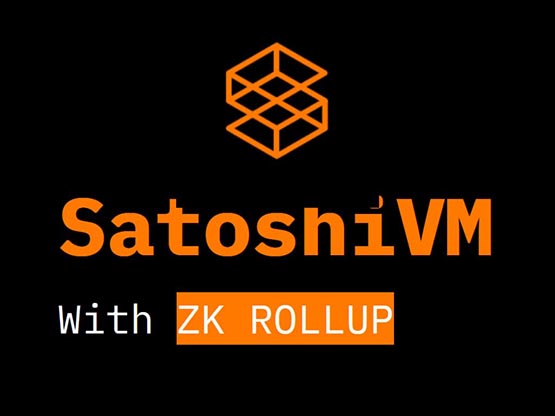
As the Bitcoin Inscription ecology attracts market attention, the narrative of BTCfi has attracted much attention. Among them, SatoshiVM, as the leader in Bitcoin Rollups, recently launched a testnet. This article will introduce how to participate in the SatoshiVM ecosystem.
Introduction to SatoshiVM
SatoshiVM is a ZK Rollup of the Bitcoin ecosystem, compatible with the Ethereum Virtual Machine (EVM), and uses native BTC Tokens are paid as fuel fees.
SatoshiVM’s vision is to seamlessly connect the EVM ecosystem with Bitcoin, allowing developers to conduct Ethereum-like development on SatoshiVM. In this way, the Bitcoin ecosystem can achieve true asset issuance and develop more advanced applications and services similar to Ethereum.
SatoshiVM uses Rollup technology to bundle multiple transactions into one proof and verify it on the Bitcoin mainnet to ensure the same level of security as the mainnet.
SatoshiVM uses Taproot, BitcoinScript and other technologies to keep the Bitcoin network consensus rules unchanged, and completes the calculation of contract verification proof through on-chain verification.
The data availability of the SatoshiVM architecture is currently also built on the Bitcoin mainnet.
Since SatoshiVM is compatible with the Ethereum Virtual Machine, users can directly use the Metamask wallet to participate in the network, and developers can also easily migrate existing EVM contracts to run on SatoshiVM.
SatoshiVM can be regarded as another EVM-compatible network. Other on-chain applications may appear in the future, such as the most basic DEX, lending agreement, pledge, etc. If readers are interested, they can actually participate in its test network now.
This article will next demonstrate how to cross-chain tBTC (testBTC, the native token of the Bitcoin test network) into the SatoshiVM test network. The process is roughly:
Establish a Bitcoin wallet
Receive tBTC
Use Metamask to link to SatoshiVM
Use the Bitcoin network to cross-chain to SatoshiVM
Complete
If the user does not have a Bitcoin wallet, you can use UniSat Wallet (download), or you can choose other wallets compatible with the Bitcoin network.
In the wallet setting section, make sure the network type is Native Segwit, and the network needs to select TESTNET.

Make sure the UniSat wallet settings are correct
Receive tBTC
Currently the team provides two Bitcoin testnet faucets (faucet), providing Users receive free tBTC test tokens:
https://bitcoinfaucet.uo1.net/send.php
https://coinfaucet.eu/en/btc-testnet/
However, after testing by the author, only the first link (Bitcoinfaucet) successfully obtained the test token.

Bitcoinfaucet receive test token screen
This step is to manually add the SatoshiVM network RPC in Metamask:
Network name: SatoshiVM Testnet
ChainID: 3110
Currency symbol: BTC
URL: https://test-rpc-node-http .svmscan.io
Blockchain browser: https://testnet.svmscan.io/
Finally, use the cross-chain bridge provided by the SatoshiVM team, Link the UniSAT wallet and Metamask wallet to cross-chain the test tokens in the UniSat wallet to the SatoshiVM network.

tBTC cross-chain screen
Officially stated that it takes more than an hour to wait for cross-chain, but the author actually waited for more than three hours, and it took Note that fuel costs are also required, and some tBTC must be reserved to prevent all tokens from being transferred across the chain. However, if the transfer amount is too small, the transaction may be lost, so it is recommended to transfer at least 0.00006tBTC to be safer.
Finish! Next, wait and see what projects emerge in this ecology, and you are free to participate.
The above is the detailed content of Rollup SatoshiVM releases testnet to teach you cross-chain participation in Bitcoin EVM compatibility. For more information, please follow other related articles on the PHP Chinese website!




